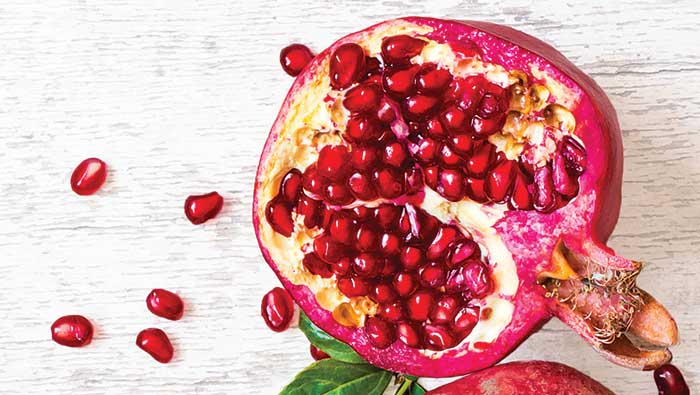
Pomegranates, which generally ripen during the winter months, are commonly known for their vivid color and superfood class. But, as UC Davis horticulturist Stacey Parker revealed, they are also a first-rate winter fruit. They are . . .
Drought tolerant
“Once established, pomegranates are pretty tough. Most fruit trees aren’t like that — they need a lot of supplemental irrigation or nutrition,” said Parker. Pomegranates are also relatively pest- and disease-free.
Nutritious
Rich in antioxidants, the pomegranate is a healthy alternative to other holiday comfort foods. Pomegranates are also low in fat and are a good source of fiber and vitamins D and C.
Decorative
With the holiday season in full swing, pomegranates make for fitting festive decor. Their magenta color is well-suited for dinner tables and handmade wreaths.
Versatile
Pomegranates can be sprinkled on flatbread, tossed into salad or squeezed into juice. Though pomegranates will last in a cool, dry place for up to three months, they can also be jellied or canned for further preservation. “Canning is a really great way to make the harvest last and also keep it from going to waste,” said Parker.
How to cut a pomegranate
- Cut off the top.
- Score the pomegranate into six even sections. Cut just deep enough to go through the outer skin.
- Place the pomegranate into a bowl of water. Pull apart the sections.
- In the water, separate the seeds from the skin so that the membranes float to the top while the seeds sink to the bottom.
- Skim off the membranes and pour the seeds into a sieve to drain the water.
- Rinse the seeds and enjoy.